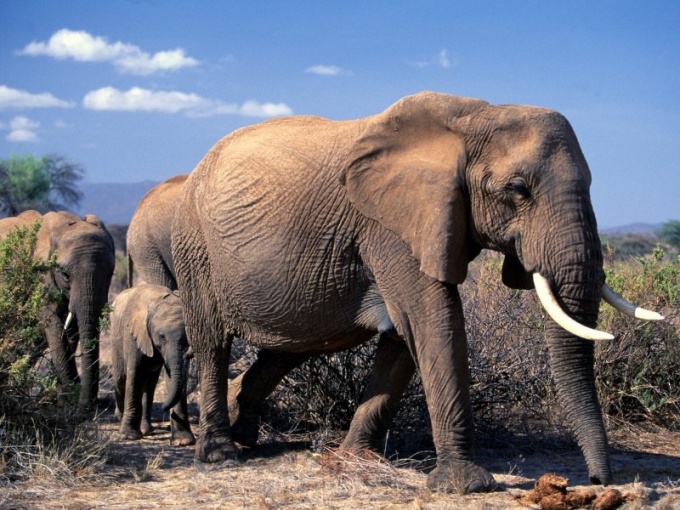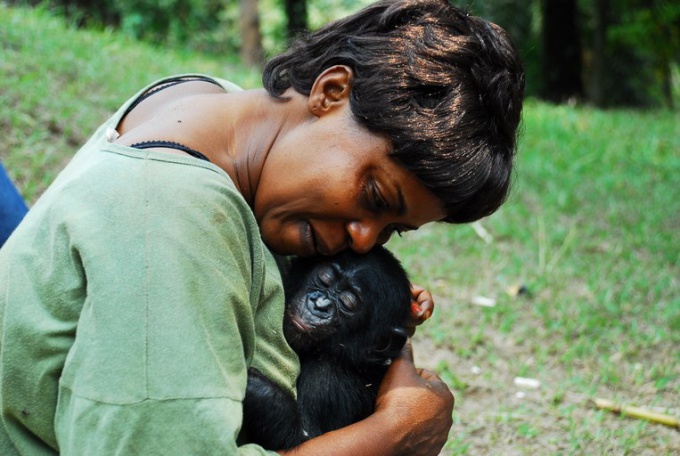Advice 1: What are the signs of a person - a mammal
Mammals are one of the classes of vertebrates, along with fish, amphibians, reptiles and birds. They feed their young with milk, have a constant body temperature, and their body is usually covered with hair. The embryo of most mammals develops in the womb at constant humidity, temperature, the supply of nutrients and oxygen through the mother's body (only egg-laying mammals, or primitive animals, for example, echidna, platypus, lay eggs).
Compared with other animals, the mammalian brain has reached a better development, due to which they form new, complex conditioned reflexes and they adapt relatively easily to a changing environment. To date, about 4,000 different species of mammals are known.
Why are humans classified as Mammals?
Like all representatives of mammals, humans are characterized by such signs of external and internal structure as: hairline, four-chambered heart, two circles of blood circulation (arterial blood does not mix with venous). The alveolar structure of the lungs significantly increases their respiratory surface and promotes intensive gas exchange with the environment.
Most mammals are characterized by live birth. This biological trait is also observed in humans. The human embryo, like almost all mammals, communicates with the mother's body through the placenta, and the newborn cub feeds on the mother's milk, which is produced in her mammary glands (egg-laying mammals do not have mammary glands: milk is excreted together with sweat, and the cubs lick it off from the surface of the body).
Milk and permanent teeth erupt in most mammals in a certain sequence and at a fixed time. The same thing happens in humans. The brain in the central nervous system, and especially the cerebral cortex (evolutionarily this is the youngest part of the brain), reaches significant development.
What structural features distinguish humans from other animals?
Man has many common features with other taxa of animals - for example, with primates, which include, in addition to Homo sapiens, also monkeys. But at the same time there are significant differences. Thus, the transition to upright posture led to fundamental changes in the skeleton, muscles, and the location of internal organs. The human brain occupies a greater proportion of the mass of the total body mass than in other primates. The lower jaw and musculature of the tongue are adapted for speech activity, the spine has four bends. The foot acquired a vaulted shape, and the fingers on the hands became more mobile and dexterous.
Advice 2: The smallest mammal on Earth is a shrew
The Etruscan shrew (pygmy shrew) is officially recognized as the smallest mammal on Earth. This shrew is a real baby among insectivorous mammals! Its weight is 1.5 grams, and its length is 3 centimeters. It is worth describing this crumb in more detail.
Instruction
The body of the dwarf shrew is slender and mobile. As already mentioned, the length of this crumb, together with the head, ending in a long and movable proboscis, is from 3 to 4 centimeters. The body weight of the Etruscan shrew varies from 1.2 to 1.5 grams. The fur of this creature is very soft and shiny. Fur color is gray to brown. In winter, the fur becomes softer and longer.
The Etruscan shrew moves very quickly and smartly. It also has an extremely high level of metabolism (metabolism). This causes her to eat a large amount of food, which exceeds her own weight twice. This baby is a real hunter of young frogs, lizards and, of course, insects. Scientists followed the life of the pygmy shrew and came to the conclusion that it has to eat about 25 times a day!
The physiological characteristics of the smallest mammal in the world are as follows: the body temperature of the Etruscan shrew is 37 ° C, and the heart beats up to 1511 beats per minute (25 beats per second!). When the baby falls into a temporary stupor, her body temperature drops to 12 ° C. Temporary torpor is a necessary part of the life of the pygmy shrew and occurs at certain periods of its life: the cold season, lack of food. The exit from this state is accompanied by an increased heart rate: at this time, heart contractions increase from 100 to 1200 per minute.
Female pygmy shrews are real caring mothers. They lead their cubs behind them in a chain. Here's how it happens: the first cub clings to its mother's tail, the second cub clings to the tail of its brother or sister, and so on. It turns out an unbreakable chain moving along the road. At first glance, one may not understand what kind of "rope" is moving, but upon closer examination it becomes clear that this is a brood of the smallest mammals on Earth.
Unfortunately, the pygmy shrew is on the verge of extinction in some countries. The reason for this is rather sharp climatic changes, to which the Etruscan crumbs are very sensitive. In addition, a decrease in the number of pygmy shrews also occurs due to the destruction of their homes as a result of certain agricultural activities. The Etruscan shrew is of great benefit to humans: it destroys insect pests in vegetable gardens, orchards and fields.
Etruscan shrews live in North America, in Southern Europe, in a number of Asian countries, in the Transcaucasus, as well as in the Moscow region, in the Urals, in the Primorsky Territory and in the Baikal region.
Mammals are the most developed among vertebrates. Their distinguishing feature is the feeding of young with milk. One of the most important features of the class of mammals is the development of higher nervous activity.

Instruction
Mammals have a number of important adaptations that have ensured the rapid progress of this group of animals. Their development is intrauterine, during which the cub receives nutrients through the placenta, only egg-laying mammals lay eggs.
Mammals are characterized by a fairly high body temperature (about 38 ° C), the birth of live young, which are then fed with milk, as well as the development of sensory organs and the cerebral cortex.
Mammals have denser and thicker skin than birds, and most of the body is covered with hair, which plays an important role in thermoregulation. Skin blood vessels also have significant thermoregulatory significance, with the expansion of their gaps, heat transfer sharply increases.
A feature of the skeleton is the presence of flat vertebrae, between which there are cartilaginous discs. The skull is connected to the spine with the help of two processes - the occipital condyles. In the cervical region of mammals, regardless of its length, as a rule, there are 7 vertebrae, with the exception of manatees and some species of sloths.
Mammals are characterized by a variety of skin glands. The ducts of the sebaceous glands open into the hair bag, their secret lubricates the surface of the epidermis and hair, protects them from wetting. The sweat glands of mammals mainly secrete water, in which salts and urea are dissolved. The secretions of the sweat and sebaceous glands give the animals a specific smell, which is used for sexual and individual recognition.
Mammals have very well developed sense organs, and their sense of smell is much more efficient than that of other vertebrates. Most mammals have an outer ear, mammals surpass birds in the breadth of the range of sounds produced and perceived, they use both supersonic frequencies (bats) and low-frequency sounds (whales).
The mammary glands of mammals are modified sweat glands, in placental and marsupials they are grape-shaped, and their ducts open on the nipples. The location of the nipples and glands may differ, for example, in monkeys and bats they are located on the chest, in ungulates - in the inguinal region. The number of teats is related to the fecundity of the species.
The mammalian brain is distinguished by its large size and complex structure of the forebrain hemispheres. The gray cortex of the hemispheres is well developed, where the centers of higher nervous activity are located, complex forms of adaptive behavior are associated with this.
Related videos
According to scientific classification, man is one of the animal species. At school, in biology lessons, children are told that people belong to one of the five biological kingdoms (that is, the animal kingdom), and then a more detailed classification follows: type - chordates, class - mammals, order - primates, family - hominids, genus - people, and, in fact, the species - a reasonable person (Homo sapiens). However, man is a completely unique creature, which is very different from all other animals.

Instruction
First of all, only man can speak. Scientists, comparing people with their closest "relatives" - chimpanzees, found out that the human larynx is located much lower than that of a monkey, and, in addition, people have a hyoid bone, thanks to which they can pronounce articulate sounds. According to scientists, people learned to speak about 350 thousand years ago. Of course, animals also communicate with each other, but their ways of communication are very different from what we humans can do.
